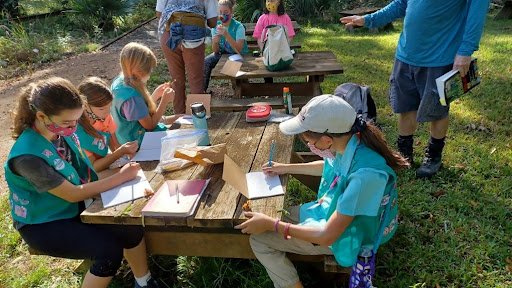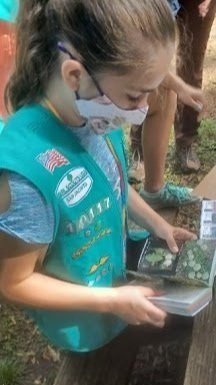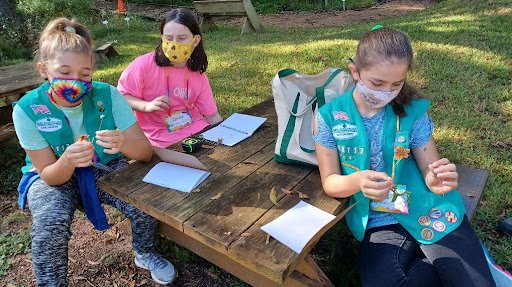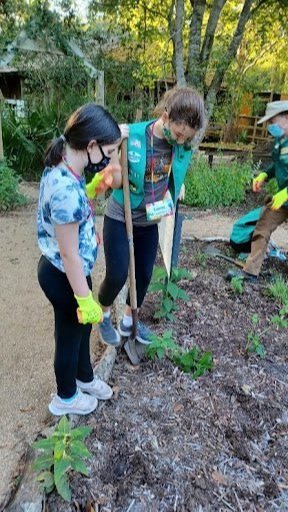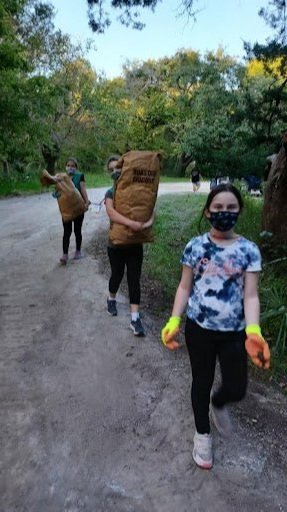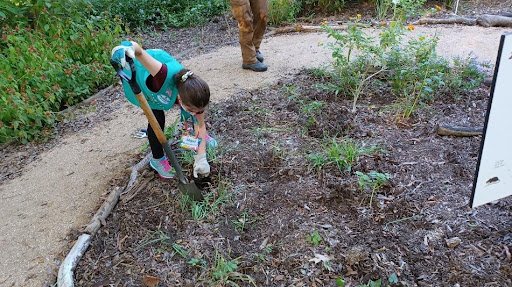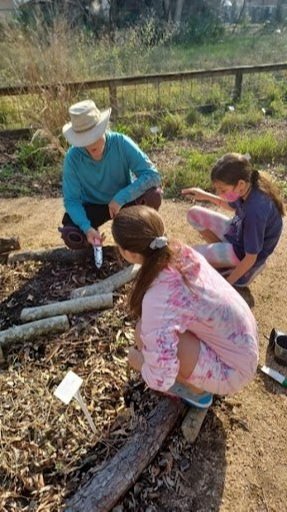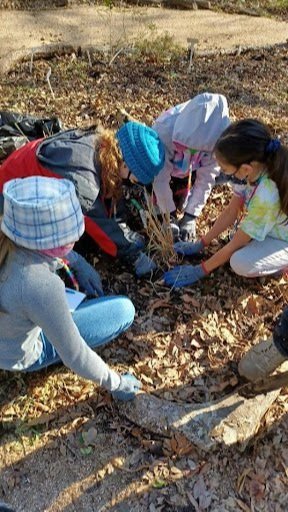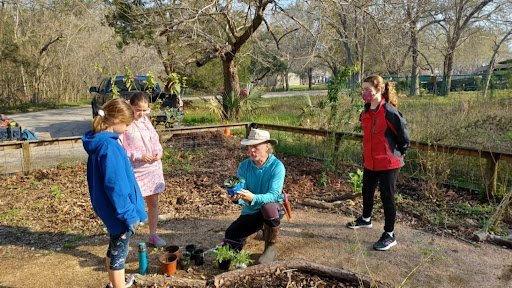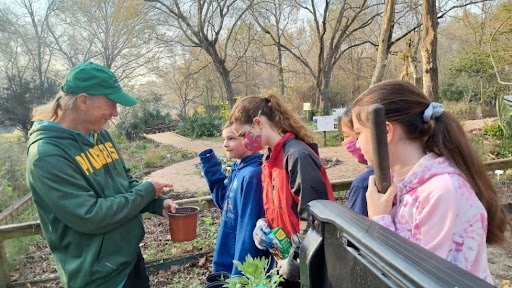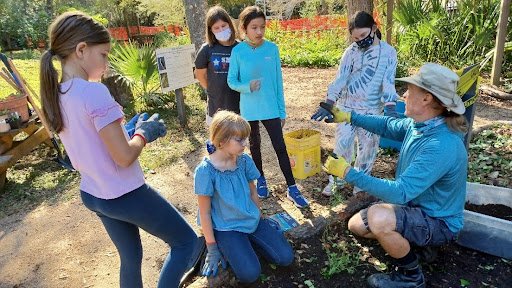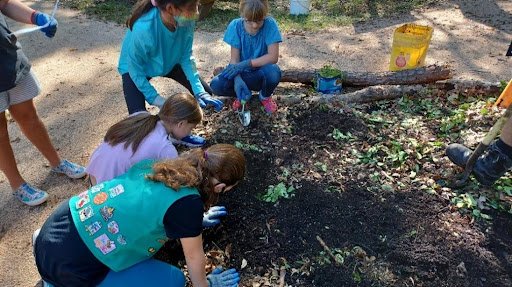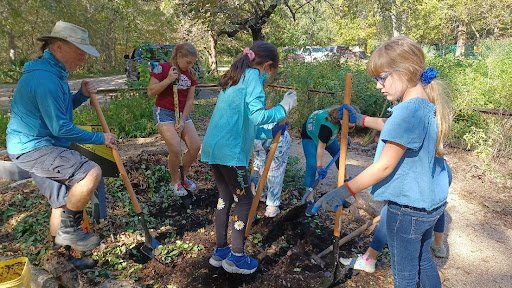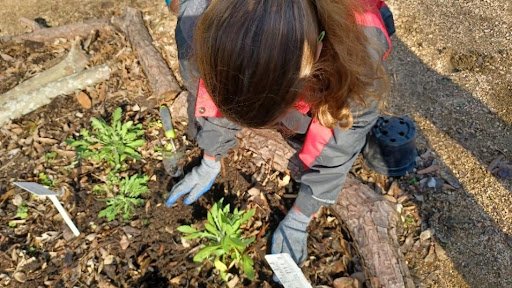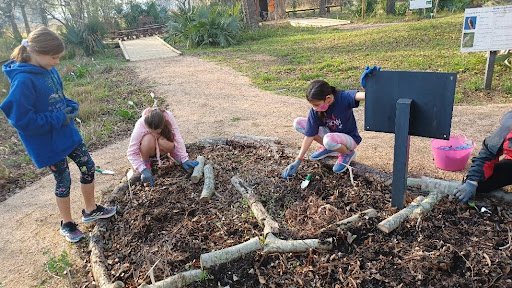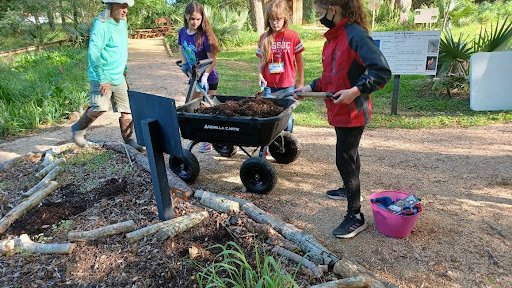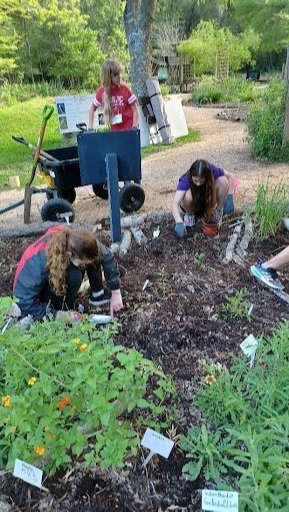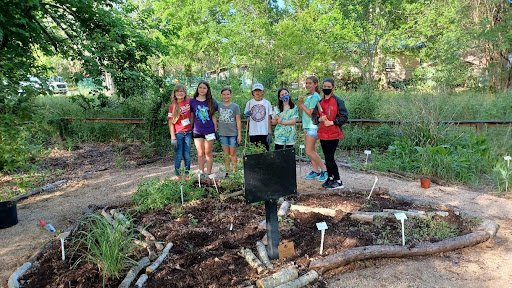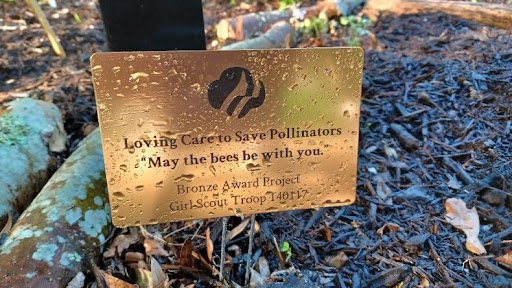Girl Scout Pollinator Garden
Introduction / Choosing Garden Type
Seven scouts of Girl Scout Troop 140117, Abigail, Amelia (Millie), Amelia, Elise, Juliella, Laurel and Olivia, made the decision to work together on a Girl Scout Bronze Award Project during their second year as Girl Scout Juniors, 5th grade. The Bronze Award is the highest honor a Girl Scout Junior can achieve. A Bronze Project is expected to take a minimum of 20 hours from building a team, exploring their community, choosing and planning the project, putting the plan in motion, and spreading the word to educate and inspire others in their community. Throughout the time scouts spend on their project they develop more confidence, meet new people, develop or learn new skills and work with other Girl Scouts to make a difference in their community.
The scouts brainstormed for areas in their community where they could contribute a sustainable service that would benefit others in the community. The location they were strongly considering was Armand Bayou Nature Center (ABNC). The scouts had many adventures there during their years as scouts, beginning with hikes as Kindergarten Daisies to Girl Scout Badge workshops as Juniors. After reaching out to the ABNC Scout Volunteering coordinator, Kathy Gardner ABNC, Troop 140117 was put in touch with ABNC volunteer Mr. Robin Kendrick-Yates, who had areas within the McGovern Children’s Discovery Area where he wanted to plant wildflowers. The following is the summary of the effort and knowledge the scouts and Mr. Robin provided and learned during their time on what became the Girl Scout Bronze Award Project Pollinator Garden.
During the initial meeting at ABNC, Mr. Robin gave the scouts a tour of the Discovery Area Garden and showed the scouts the areas that needed work. Mr. Robin spoke of the Akokisas tribe that had once inhabited the area and the plants that were native to the area and how the Akokisas used some of those plants in their day to day lives. He also explained invasive species, both plants and animals, and the different types of gardens that would be appropriate for the area, using only native plants to the Texas Coastal Plains region. The scouts decided on an area of the garden and to plant a native pollinator garden to help the bees and butterflies at ABNC. Once the type of garden was decided the scouts had to research the type of plants that acts as a larval host and pollen to native butterflies, moths, bees and other insects.
Research and Learning from Mr. Robin
Prior to planting the scouts had to research the appropriate plants for the pollinator garden. The scouts used books on Texas native plants from the local Freeman Branch Library and books provided by Mr. Robin along with his knowledge of native plants and insects. The scouts used their resources to narrow in on plants that were native to our local part of Texas, where local pollinators existed along with insects that could use that plant as a larval host. Mr. Robin told the scouts a story about the flowers of the Indian blanket plant that was native to the Texas coastal plains. Olivia’s favorite plant was the Pink Evening Primrose. Elise’s favorite plant was Indian Blanket. Abigail’s favorite plant was Frog Fruit. Amelia’s favorites were powder puff and Milkweed. Laurel’s favorite plant was Milkweed. Juliella’s favorite plant was Passion Flower. Amelia’s (Millie’s) favorite plant was Blue Bonnets. Even though the focus was on using local native plants, an exception was made to include Blue Bonnets. While not native to the Texas Gulf Coast, they are a beloved flowering plant native to Texas. Research into the different types of plants included the size information, which helped determine how many plants would fit in the garden area and in what area of the garden the plants should be placed.
Garden Design
The scouts needed to assess where the best placement of their chosen pollinator plants within the area of the garden. Mr. Robin explained how to take into account the location of the sun’s path during most of the year when choosing the location of plants so that the larger plants wouldn’t block out the sun for the smaller plants. As the sun’s path is south of the garden location the plants needed to be placed in order of shortest to tallest from the south side of the garden to the north side of the garden. The scouts started by using their notebooks to sketch out how they wanted the garden to look. The scouts then used a big rope on the floor to outline the garden in life size and mapped out the plants by writing their names and measurements on individual pieces of paper and placing them in the garden outline. Designing the garden before planting helped speed up planting because the scouts knew where the plants needed to go and weren’t trying to figure that out when they were at the garden ready with gardening tools.
Preparing the Garden
Prior to planting the chosen pollinator plants, the garden area needed to be prepared. Mr. Robin explained steps to take in order to prepare the ground to give the new plants the best chance of thriving in the garden. Scouts removed weeds and loosened up the soil with trowels. Removing weeds helps the new plants by not having to share nutrients or space with weeds and loosening up the soil makes it easier for the roots of the new plants to spread and lets oxygen into the soil. Cardboard was placed under a layer of soil to help keep weeds and other roots out of the garden area. Mr. Robin also spoke about the concept of circular economy through the example of composting. Composting produces nutrient rich soil for gardens while reducing household waste going into landfills. Compost, from Mr. Robin’s yard, was added to the soil to give the soil more nutrients for the plants to grow big and strong. The garden was now ready for plants.
Planting
After preparing the garden the planting could begin, but not all the plants could be planted all at once. Mr. Robin taught the scouts how certain plants needed to be planted during different times of the year to be successful. As it was late fall when the garden was ready for planting, only the seeds and plants that should be planted during that time of year were placed within the garden. Throughout the rest of the school year, from fall to winter to spring, there were more planting days at the garden and plants and seeds were added that were appropriate for that time of the year.
Mr. Robin taught the scouts how to plant each type of seed and plant introduced to the garden. All plants have a certain depth within the soil they need to be planted in order for them to grow and different plants need different amounts of space as they grow larger. One of the plants, the passion flower, even needed a climbing support to be made for it to climb as it grows. Mr. Robin showed the scouts how to make a climbing structure and discussed a bit about thatching. Mr. Robin also showed the scouts how to use garden tools without bringing harm to any of the plants. Scouts dug holes and planted each seed and plant carefully. After each planting day the scouts watered the garden.
Maintenance
Having completed planting in the garden Mr. Robin explained the maintenance a garden needs to keep plants healthy and growing. Every plant needs essential nutrients from the soil in addition to water, sunlight and protection from harmful weeds, which have a shorter growing period and can sprout up much quicker than the garden plants. Harmful weeds will need to be removed occasionally to keep the garden plants healthy. New soil will need to be added every so often and the garden plants will require someone to water them so that they don’t dry out. The scouts understand the needs of the garden and will continue maintaining the garden so that the plants stay healthy and to keep their wish to preserve a BEAUTIFUL garden for ABNC.
Garden Future / Upcoming Plans
Here at the ABNC the scouts plan to keep our plants alive for as long as possible, with weed management and watering plan to keep our plants nice and healthy. Hopefully the plants will grow and the garden will look amazing. We also hope that butterflies and bees and nectar eating birds will visit the garden. As the garden grows it will from an ecosystem within Armand Bayou Nature Center for local pollinators and microfauna in the soil. The garden will help repopulate local butterfly species and bees will come. The plants will provide more oxygen and future generations will enjoy it. Scouts enjoyed designing the garden type because they like bees and butterflies, which are an important part of our ecosystem.
Troop 140117 are planning many visits so that the garden plants grow and stay healthy and strong.


